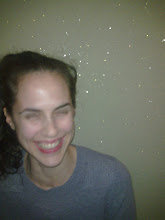- I might miss something. Yes, it looks boring, but maybe it's worth the effort, maybe there's some magical moment of revelation hiding in there.
- I'm cheating. My nerdy soul won't let me say I read the book knowing that I skipped a few pages in the middle.
 When I was reading "Writing the comedy film" (Stuart Voytilla and Scott Petri), I did allow myself to skip some chapters. A big part of the book is dedicated to different comedy genres. I decided it was ok for me to read only about genres that are relevant for my screenplay (ensemble comedy, farce) or genres that interest me (fish out of water, romantic comedy), and skip other genres (sports comedy, military comedy).
When I was reading "Writing the comedy film" (Stuart Voytilla and Scott Petri), I did allow myself to skip some chapters. A big part of the book is dedicated to different comedy genres. I decided it was ok for me to read only about genres that are relevant for my screenplay (ensemble comedy, farce) or genres that interest me (fish out of water, romantic comedy), and skip other genres (sports comedy, military comedy).But in Syd Field's case, it's different. It's not that easy to let go. The book's subtitle is "the foundations of screenwriting". Can I really allow myself to miss a foundation? Finally, I decided - yes. It's ok. I can read the chapter titled "plot points" and skip the three pages about "Matrix". I can read the "sequence" chapter and skip the two pages about "Seabiscuit". And I'll sleep well.
 And another thing: Syd is quite strict about his screenplay paradigm. On one hand, he says there are no rules. On the other hand, he says you should use 14 cards to write the first act. If you only have 12-13 cards that usually means your first act is too thin, and if you have 15-16 cards then your first act is too long. That's pressure right there. I mean, his whole approach to the first act is very helpful – stressing how important it is, looking at it as if it was an independent story with a beginning, middle and an end – but when it comes to having exactly 14 cards, that's a bit too much for me. He also says you should have 14 cards for the first half of act II, 14 for the second half of act II, and another 14 for act III. He mentions films that used less or more than that, but he definitely gives you the impression that you won't be able to pull that off yourself. I have to say I like Robert Mckee's looser approach to the cards: No numbers. Just write all your scenes on cards and shift them around till you're happy with the order.
And another thing: Syd is quite strict about his screenplay paradigm. On one hand, he says there are no rules. On the other hand, he says you should use 14 cards to write the first act. If you only have 12-13 cards that usually means your first act is too thin, and if you have 15-16 cards then your first act is too long. That's pressure right there. I mean, his whole approach to the first act is very helpful – stressing how important it is, looking at it as if it was an independent story with a beginning, middle and an end – but when it comes to having exactly 14 cards, that's a bit too much for me. He also says you should have 14 cards for the first half of act II, 14 for the second half of act II, and another 14 for act III. He mentions films that used less or more than that, but he definitely gives you the impression that you won't be able to pull that off yourself. I have to say I like Robert Mckee's looser approach to the cards: No numbers. Just write all your scenes on cards and shift them around till you're happy with the order.Anyway, yesterday I went out and bought a stack of cards. I feel like soon I'll be able to fill them.








No comments:
Post a Comment